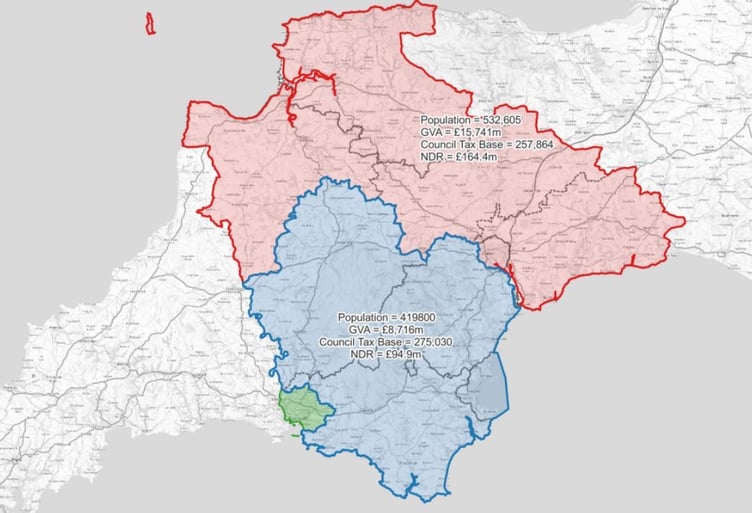The government has six criteria for unitary government, the last of which is that ‘new unitary structures should enable stronger community engagement and deliver genuine opportunity for neighbourhood empowerment’.
So it was perhaps no surprise when Plymouth City Council Cabinet Cllr Sally Cresswell explained why it was the Council had chosen to dismiss the possibility of a new unitary based on the Plymouth Housing Market Area, the boundary of which was initially identified during the development of the Plymouth and South Devon Joint Local Plan, first adopted in 2019, and encompassing an area of 2,128km2.
It includes not only the city of Plymouth itself but also every parish in both the South Hams and West Devon.
However ‘our early assessments concluded this would create an unwieldy area for service delivery’, she told a recent meeting organised by the South Hams Society at Follaton House.
‘The resulting authority of around 413,000 residents would be too expansive for effective government,’ she continued. ‘And my personal feeling is that when you start to look as well at the idea that new structures should actually have stronger community engagement for neighbourhood and empowerment, which is one of the key criteria, I think such an unwieldy local authority would probably fly a bit in the face of that sixth criteria that the government is putting forward as part of the proposals’.
Instead Plymouth is proposing a far smaller unitary, created by expanding the city to include within its boundaries 13 parishes currently part of the South Hams.
Arguably it is only doing so because its existing population of around 263,000 falls short of the minimum 300,000 it understands a unitary needs to be able ‘to achieve efficiencies, improve capacity and withstand financial shocks’.
And while there might well be a case for including communities such as Woolwell, Roborough and Sherford that directly border on to its boundaries within Plymouth, the only apparent logic to adding the likes of Holbeton and Ivybridge, clearly separated from the city by extensive tracts of open countryside largely populated by crops and livestock, is to make the numbers add up.
That said, if an authority of around 413,000 residents scattered across an area of 2,128km2 would be too unwieldy and expansive you could question why the leaders of South Hams, Teignbridge and West Devon Councils are so keen to promote their new unitary that also includes Torbay.
To quote Exeter City Council, discussing their own unitary plans: ‘if localities are drawn too wide, it risks loss of community identity and cohesiveness’.
Yet the South Devon Council our leaders are proposing would encompass an area of nearly 2,800km2, almost a third larger than the Housing Market Area and greater than counties such as Dorset, Derbyshire, Cheshire, Staffordshire and Nottinghamshire.
Even the leader of Torbay Council Cllr David Thomas had to agree a community drawn that wide, combining the urban acreage of Torbay with a predominantly rural remainder, would inevitably lack both identity and cohesiveness.
As District Councillor Sam Penfold was forced to admit ‘We did all vote for that. But I want to say this is a really bum option that’s happening to us and we’re being squeezed from Torbay, from Exeter and from Plymouth.’
And that’s because the government are insisting all pieces of their unitary jigsaw will be forced to fit together, no matter how nonsensical.





Comments
This article has no comments yet. Be the first to leave a comment.